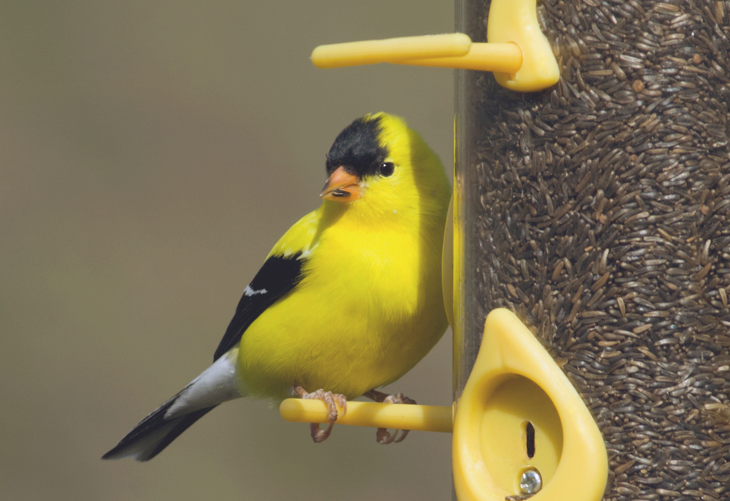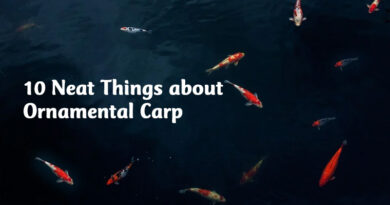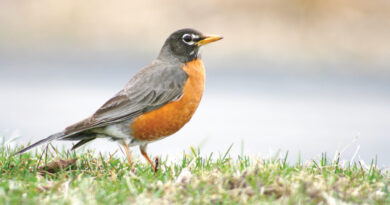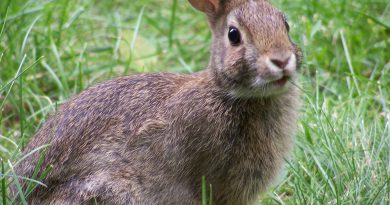Finches at the Feeders
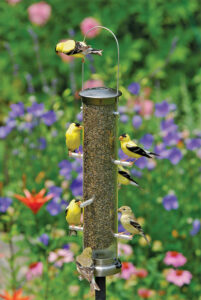
There is no question that finches are among the most popular birds seen at feeders in summer. Finches don’t just look great but they sound amazing, too, with their sweet, melodic calls. Some of the beautiful songs you hear early in the morning are finches as they awaken with the sun. For many people who feed wild birds, American goldfinches, house finches, purple finches and rose-breasted grosbeaks are the delight of the season at their feeders. There are different ways to attract them by selecting appropriate foods and feeders.
Like canaries in colour
American goldfinches are often referred to as wild canaries due to the brilliant yellow plumage of the males and the olive shade of females. They are without a doubt the most desired bird to attract throughout the summer months. They are very common in southern Manitoba and, depending on where you live, you may see only a pair or two or alternatively dozens at a time.
New developments with limited habitat may not see many finches, or other birds for that matter. I find the number I get does fluctuate each year, but there have been seasons where I have easily had 50 at a time!
The most commonly selected food for goldfinches is Nyjer seed. This tiny black seed is from the thistle family but is imported from Nigeria and India, then sterilized so that it will not grow.
Due to the seed’s small size, you should use it only in a Nyjer feeder. These feeders have tiny slits so that the seed won’t spill and only finches can access it. House sparrows also love Nyjer seed and will dominate the feeder if they can get at it.
Be wary of flexible plastic feeders as sparrows will widen the feeder’s holes and ruin it. There is also an “upside-down” finch feeder available that is being marketed as an enjoyable feeder, but it is not so enjoyable for finches! Finches are able to hang upside down, but gravity makes this a less than desirable position for eating.
Finch feeders should be hung three feet or more from other feeders. They can be close to your home as finches are quite tame. In fact, there are feeders that suction cup to windows, which finches really love and so do the people who get to see them that closely.
House finches and purple finches are a little larger than goldfinches, with broader beaks, so Nyjer feeders are not the preferred type for them. Some birders find it a challenge to distinguish between the house and purple finch as they are similar in appearance. House finches have an orange-red colour and purple finches have more of a raspberry shade. Many people describe both birds as sparrows with red on them. Purple finches also have more coverage of colour on their body compared to the house finch.
To attract these finches you will want to offer black oil sunflower in either a window feeder or a tube-style feeder. You will also attract many other lovely wild birds at these feeders, like black-capped chickadees and white-breasted nuthatches.
Rose-breasted grosbeaks are a spectacular finch that are almost the same size as a robin. The males are black and white with a beautiful, crimson red breast. Females are very interesting looking; they appear to be a very large sparrow with a prominent white stripe over the eye.
Head for the windows
The large size of these birds means some special features are required to accommodate them. For food they, too, enjoy black sunflower but need a larger platform to land on. Many tube feeders allow you to attach a tray that is perfect for grosbeaks. You can even scatter extra food onto the tray. Sadly, grosbeaks have the terrible habit of hitting windows so window feeders can be used as a good deterrent. But you can also purchase static cling decals that will stop all birds from colliding with your windows.
One other fact about finches that I have learned over the years is that they really enjoy shelled sunflower seeds. When I offer this seed all other foods are almost ignored. This is a more expensive choice, but it is very clean and the birds notably prefer it.
Try attracting some of these wonderful birds to your yard this season and add some colour and music to your life.
By Sherrie Versluis who owns The Preferred Perch; call her at 204-257-3724.



